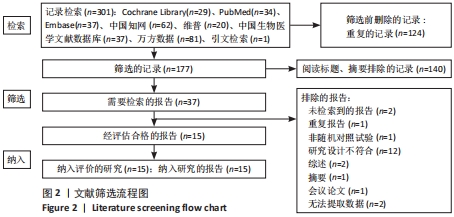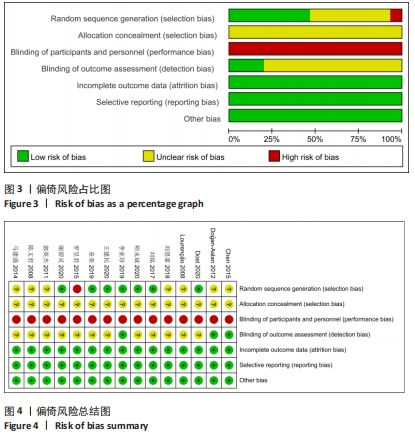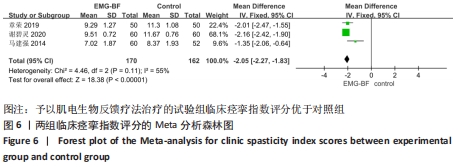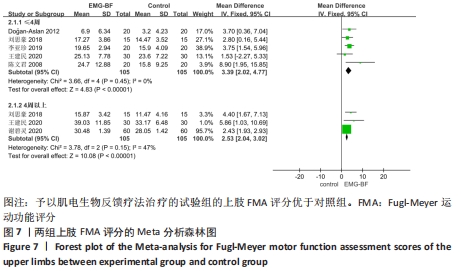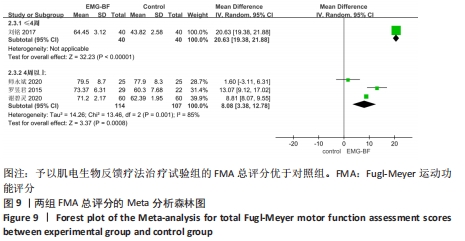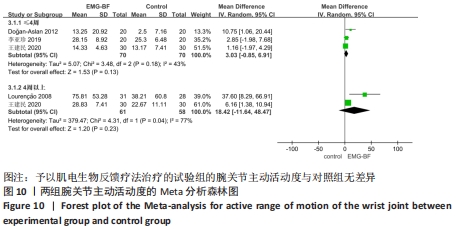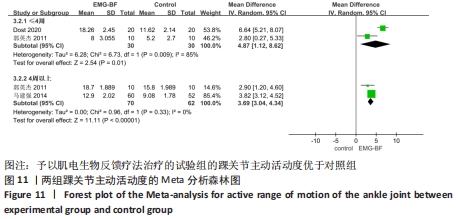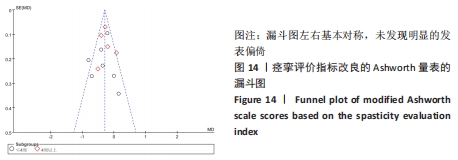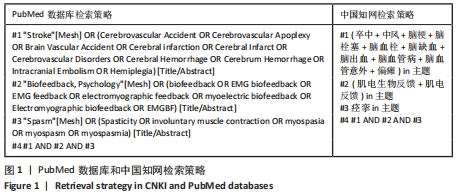[1] NAGHAVI M, ABAJOBIR AA, ABBAFATI C, et al. Global, regional, and national age-sex specific mortality for 264 causes of death, 1980-2016: a systematic analysis for the Global Burden of Disease Study 2016. Lancet. 2017;390(10100): 1151-1210.
[2] GBD 2016 NEUROLOGY COLLABORATORS. Global, regional, and national burden of neurological disorders, 1990-2016: a systematic analysis for the Global Burden of Disease Study 2016. Lancet Neurol. 2019;18(5):459-480.
[3] JOHNSON W, ONUMA O, OWOLABI M, et al. Stroke: a global response is needed. Bull World Health Organ. 2016;94(9):634.
[4] ZOROWITZ RD, GILLARD PJ, BRAININ M. Poststroke spasticity: sequelae and burden on stroke survivors and caregivers. Neurology. 2013;80(3 Suppl 2): S45-S52.
[5] OPHEIM A, DANIELSSON A, ALT MM, et al. Upper-limb spasticity during the first year after stroke: stroke arm longitudinal study at the University of Gothenburg. Am J Phys Med Rehabil. 2014;93(10):884-896.
[6] GILLARD PJ, SUCHAREW H, KLEINDORFER D, et al. The negative impact of spasticity on the health-related quality of life of stroke survivors: a longitudinal cohort study. Health Qual Life Outcomes. 2015;13:159.
[7] LI S, CHEN YT, FRANCISCO GE, et al. A Unifying Pathophysiological Account for Post-stroke Spasticity and Disordered Motor Control. Front Neurol. 2019;10:468.
[8] FRANCISCO GE, BALBERT A, BAVIKATTE G, et al. A practical guide to optimizing the benefits of post-stroke spasticity interventions with botulinum toxin A: An international group consensus. J Rehabil Med. 2021;53(1):m134.
[9] SANTAMATO A, CINONE N, PANZA F, et al. Botulinum Toxin Type A for the Treatment of Lower Limb Spasticity after Stroke. Drugs. 2019; 79(2):143-160.
[10] BETHOUX F. Spasticity Management After Stroke. Phys Med Rehabil Clin N Am. 2015;26(4):625-639.
[11] 张通,赵军.中国脑卒中早期康复治疗指南[J].中华神经科杂志,2017,50(6):405-412.
[12] 王丽菊,陈立早,欧艺,等.镜像视觉反馈和肌电生物反馈对脑卒中偏瘫患者上肢功能的影响[J].中国康复理论与实践,2015,21(2):202-206.
[13] 何玲燕,吴月峰,王雪飞,等.穴位肌电生物反馈治疗脑卒中偏瘫后踝关节活动障碍的临床疗效观察[J].中国康复医学杂志,2020,35(11):1342-1345.
[14] CUMPSTON M, LI T, PAGE MJ, et al. Updated guidance for trusted systematic reviews: a new edition of the Cochrane Handbook for Systematic Reviews of Interventions. Cochrane Database Syst Rev. 2019;10:D142.
[15] PAGE MJ, MCKENZIE JE, BOSSUYT PM, et al. The PRISMA 2020 statement: an updated guideline for reporting systematic reviews. BMJ. 2021;372:n71.
[16] THE WORLD HEALTH ORGANIZATION. Stroke--1989. Recommendations on stroke prevention, diagnosis, and therapy. Report of the WHO Task Force on Stroke and other Cerebrovascular Disorders. Stroke. 1989;20(10): 1407-1431.
[17] HIGGINS JP, ALTMAN DG, GOTZSCHE PC, et al. The Cochrane Collaboration’s tool for assessing risk of bias in randomised trials. BMJ. 2011;343:d5928.
[18] JADAD AR, MOORE RA, CARROLL D, et al. Assessing the quality of reports of randomized clinical trials: is blinding necessary? Control Clin Trials. 1996;17(1):1-12.
[19] LOURENÇÃO MI, BATTISTELLA LR, DE BRITO CM, et al. Effect of biofeedback accompanying occupational therapy and functional electrical stimulation in hemiplegic patients. Int J Rehabil Res. 2008;31(1):33-41.
[20] 陈文君,李建华,寿依群,等.表面肌电生物反馈治疗对偏瘫患者上肢功能的影响[J].中华物理医学与康复杂志,2008,30(8):548-550.
[21] 郭英杰,程杨,丁华,等.生物反馈结合运动训练对脑卒中足下垂患者踝关节运动能力的影响[J].生物医学工程与临床,2011,15(2):125-128.
[22] DOĞAN-ASLAN M, NAKIPOĞLU-YÜZER GF, DOĞAN A, et al. The Effect of Electromyographic Biofeedback Treatment in Improving Upper Extremity Functioning of Patients with Hemiplegic Stroke. J Stroke Cerebrovasc Dis. 2012;21(3):187-192.
[23] 马建强.肌电生物反馈联合运动疗法对脑卒中跖屈肌痉挛的疗效观察[J].中国康复,2014, 29(3):212-213.
[24] CHEN HX, WANG W, XIAO HQ, et al. Ultrasound-guided botulinum toxin injections and EMG biofeedback therapy the lower limb muscle spasm after cerebral infarction. Eur Rev Med Pharmacol Sci. 2015;19(9):1696-1699.
[25] 罗昱君.推拿结合肌电生物反馈治疗脑卒中后上肢痉挛性偏瘫的临床观察[D].武汉:湖北中医药大学针灸推拿学,2015.
[26] 刘铭,李芝慧,马晖.电子生物反馈疗法联合康复训练治疗脑卒中偏瘫痉挛对肌张力及运动能力的影响[J]. 实用中医药杂志,2017,33(10): 1114-1116.
[27] 刘思豪,李哲,刘骞豪,等.低频重复经颅磁刺激联合肌电生物反馈疗法对脑卒中患者上肢功能的临床研究[J].中国康复,2018,33(6):451-454.
[28] 章荣,叶陈,周蜜娟.肌电生物反馈疗法在脑卒中偏瘫异常步态患者中的应用研究[J].川北医学院学报,2019,34(4):445-447.
[29] 李亚珍.手连续被动运动结合肌电生物反馈疗法对急(亚急)性脑卒中后手功能影响的研究[D].兰州:甘肃中医药大学,2019.
[30] DOST SÜRÜCÜ G, TEZEN Ö. The effect of EMG biofeedback on lower extremity functions in hemiplegic patients. Acta Neurol Belg. 2020; 121(1):113-118.
[31] 谢碧灵,邹沁,田玉.肌电生物反馈联合康复训练对脑卒中偏瘫患者运动功能和生活质量的临床研究[J]. 川北医学院学报,2020,35(2):350-353.
[32] 王建民,王岳,厉坤鹏,等.肌电生物反馈治疗早期脑梗死后手腕部痉挛状态的疗效观察[J].中华物理医学与康复杂志,2020,42(8):709-711.
[33] 师永斌,宋丹彤,张雁儒,等.肌电生物反馈疗法联合PNF训练对卒中患者肢体功能恢复的影响[J].中华物理医学与康复杂志,2020,42(10): 926-928.
[34] LI S, FRANCISCO GE. New insights into the pathophysiology of post-stroke spasticity. Front Hum Neurosci. 2015;9:192.
[35] PUNDIK S, MCCABE J, SKELLY M, et al. Association of spasticity and motor dysfunction in chronic stroke. Ann Phys Rehabil Med. 2019;62(6):397-402.
[36] PICELLI A, TAMBURIN S, GAJOFATTO F, et al. Association between severe upper limb spasticity and brain lesion location in stroke patients. Biomed Res Int. 2014;2014:162754.
[37] ZHANG B, SAATMAN KE, CHEN L. Therapeutic potential of natural compounds from Chinese medicine in acute and subacute phases of ischemic stroke. Neural Regen Res. 2020;15(3):416-424.
[38] WISSEL J, VERRIER M, SIMPSON DM, et al. Post-stroke spasticity: predictors of early development and considerations for therapeutic intervention. PM R. 2015;7(1):60-67.
[39] 王庭槐,高庆春,许小洋,等.肌电生物反馈的非线性机制[J].中国心理卫生杂志,2006(2): 113-117.
[40] 刘美快,徐乐义,李海燕,等.肌电生物反馈疗法改善脑卒中患者腓肠肌形态结构的超声研究[J].中国康复医学杂志,2020,35(7):847-850.
[41] 汪菲,何晴,李建华.表面肌电在中枢神经系统疾病肌痉挛患者评价中的研究现状[J].中国康复医学杂志,2016,31(11):1277-1280.
|


